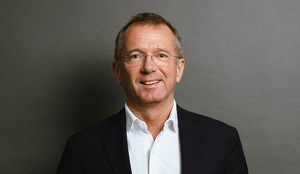It is finally here: The EU Commission’s draft delegated act on renewable hydrogen
It was supposed to enter into force by the end of last year. That did not quite work out, but we now have a draft of the Commission delegated regulation on renewable hydrogen. While technically only directly relevant to renewable fuels in the transport sector, it is expected that this delegated act in fact establishes the rules for the production of green hydrogen in all sectors.
Below, you will find a brief overview on the main regulations of the draft delegated act.
Please do not hesitate to contact us in case of any individual questions.
Legislative status
According to the recast of the Renewable Energy Directive 2018/2001 (RED II), Member States must ensure a minimum share of 14% of renewable energy within the final consumption of energy in the transport sector (Art. 25 (1)). In Germany, this was transposed through the ‘greenhouse gas reduction quota’ (Treibhausgasminderungsquote) which fuel suppliers must comply with when placing fuels on the market. Art. 27 RED II contains the calculation rules for the minimum share of renewable energy and provides for a delegated act to provide a Union methodology setting out detailed rules by which economic operators are to comply with the requirements. The delegated act was meant to enter into force by 31 December 2021.
In the context of its REPowerEU Plan, the EU Commission has opened the public consultation process for the draft delegated regulation. The consultation was opened on 20 May 2022 and ends on 17 June 2022. Further details as well as the draft delegated regulation can be found here.
After the feedback period, the final text will be provided to the European Parliament and the Council for a two-month scrutiny period. We therefore expect the regulation to enter into force in the autumn of 2022. The delegated regulation will be directly applicable and binding in all Member States. At least in Germany, this means that revisions of national legislation, specifically with regard to the definition of renewable hydrogen and its production requirements, are to be expected.
In addition, the draft regulation was not well accepted by everyone when first published. It is therefore likely that many stakeholders will participate in the public consultation. This may lead to further revisions of the draft regulation.
Main contents of the draft delegated regulation
Kindly note that the following is not a complete account of the draft delegated regulation but only a brief summary on the main contents. Aspects particularly relevant for you may not be fully covered, or covered at all.
Definitions
Art. 2 of the draft delegated regulation contains the relevant definitions. Most importantly, the draft contains the first European statutory definition of renewable hydrogen in Art. 2 (4): “‘renewable hydrogen’ means hydrogen derived only from renewable energy sources other than biomass”.
What was to be expected, has now become clear: Biomass is not a desired renewable energy source and is therefore excluded from the production of renewable hydrogen. This will most likely lead to a change of national provisions, at least in Germany where biomass is not yet excluded from the renewable energy sources for producing renewable hydrogen. The recitals do not contain any further background on the exclusion of biomass. Some stakeholders hoped that it would at least be included for a transitional period as it could help produce renewable hydrogen in higher capacities until wind and solar capacities have been extended. It is also unclear why biogenic waste shall be excluded.
Also noteworthy is that the definition of ‘installation generating renewable electricity’ in Art. 2 (3) not only excludes units producing electricity from biomass but also storage units.
Directly connected installations
Article 3 of the draft delegated regulation contains the rules for counting electricity sourced from directly connected installations as fully renewable. The main requirement is that there is a direct connection between the hydrogen production unit and the electricity generating unit. Furthermore, the operator must provide evidence for the following:
- Either a direct line between the hydrogen production unit and the unit producing renewable electricity or the production of renewable electricity and renewable hydrogen take place within the same installation, and
- The installation generating renewable electricity came into operation not earlier than 36 months before the hydrogen production unit, and
- The installation producing electricity is not connected to the grid, or, if it is connected to the grid, a smart metering system must show that no electricity has been taken from the grid to produce the renewable hydrogen.
Electricity taken from the grid
Alternatively, renewable hydrogen may also be produced with electricity taken from the grid. Article 4 of the draft delegated regulation contains the rules for counting electricity taken from the grid as fully renewable. Fuel producers have three options to count electricity taken from the grid as fully renewable:
- The hydrogen production unit is located in a bidding zone where the average proportion of renewable electricity exceeded 90% in the previous calendar year and the production of renewable hydrogen does not exceed a maximum number of hours set in relation to the proportion of renewable electricity in the bidding zone.
- A power purchase agreement has been concluded for an amount that is at least equivalent to the amount of electricity claimed as fully renewable. Additional criteria are listed in Art. 4 (2) (a) – (d):
- The installation generating renewable energy came into operation not earlier than 36 months before the hydrogen production unit. Rules for power purchase agreements that are concluded after a previous one has ended as well as adding additional capacity to an installation are in place, and
- The installation generating renewable energy has not received support in the form of operating aid or investment aid, whereas this requirement must not be met by hydrogen production units used for research, testing and demonstration (see Art. 4 (3)), and
- The renewable hydrogen and the renewable power must be produced simultaneously during the same one-hour period whereas different options exist to comply with this requirement, and
- The location of the electrolyser must fulfil certain requirements which are detailed in Art. 4 (2) (d) (i) – (iii) ((i) – (iii) are currently named (a) – (c) which we assume is an editorial mistake).
- Consumption of power during an imbalance settlement whereas it must be demonstrated that power-generating facilities were downward redispatched.
Lastly, it should be noted that Member States may introduce additional criteria concerning the location of electrolysers (Art. 4 (5)).
General criteria
Article 5 contains requirements regarding information that must be documented for each production hour which mainly refers to the amounts of electricity used and hydrogen produced as well as details on where the electricity was taken from.
Article 6 regulates that the rules of the delegated regulation shall apply both to renewable hydrogen produced inside and outside the territory of the Union.
Transitional provisions
A transitional provision is contained in Article 7 whereas Art. 4 (2) (a) and (b) shall only apply from 1 January 2027. These are the provisions relating to renewable electricity taken from the grid and procured through a power purchase agreement which stipulate that the renewable energy must come from an installation which came into operation not earlier than 36 months before the hydrogen production unit and the requirement that the renewable energy producing installation must not receive any financial support.
A further transitional provision refers to Article 4 (2) (c) (i) and (ii) stipulating that until 31 December 2026, the renewable power must not be produced within the same calendar hour but only the same calendar month. However, this transitional provision does not apply to projects involving state aid unless the state aid only remunerates capital expenditure.
Article 8 stipulates that Article 4 (2) (a) and (b) do not apply to hydrogen production units that come into operation before 1 January 2027. These are the provisions relating to renewable electricity taken from the grid and procured through a power purchase agreement which stipulate that the renewable energy must come from an installation which came into operation not earlier than 36 months before the hydrogen production unit and the requirement that the renewable energy producing installation must not receive any financial support.
Outlook
The additional criteria of simultaneous production and additional production of renewable electricity to produce renewable hydrogen are not unexpected. But it is at least questionable whether further transitional provisions would not have helped to achieve the targets.
With its REPowerEU Plan, the European Commission increased its aim to produce 5,6 million tonnes of renewable hydrogen in the EU to 10 million tonnes by 2030. Additionally, a further 10 million tonnes of renewable hydrogen are to be imported from third countries. These goals are ambitious but most likely necessary to achieve the climate goals. Against this background, one could argue that it should have been made easier for hydrogen producers to produce renewable hydrogen. With the strict rules on the additionality requirements and the simultaneous production of renewable energy, the target production by 2030 seems very ambitious if not impossible to reach.
Some stakeholders have already issued statements claiming that the requirements are too strict and that the delegated regulation will obstruct the increase of renewable hydrogen production capacities instead of facilitating it. It remains to be seen whether the public consultation process leads to any significant changes of the draft delegated regulation.




